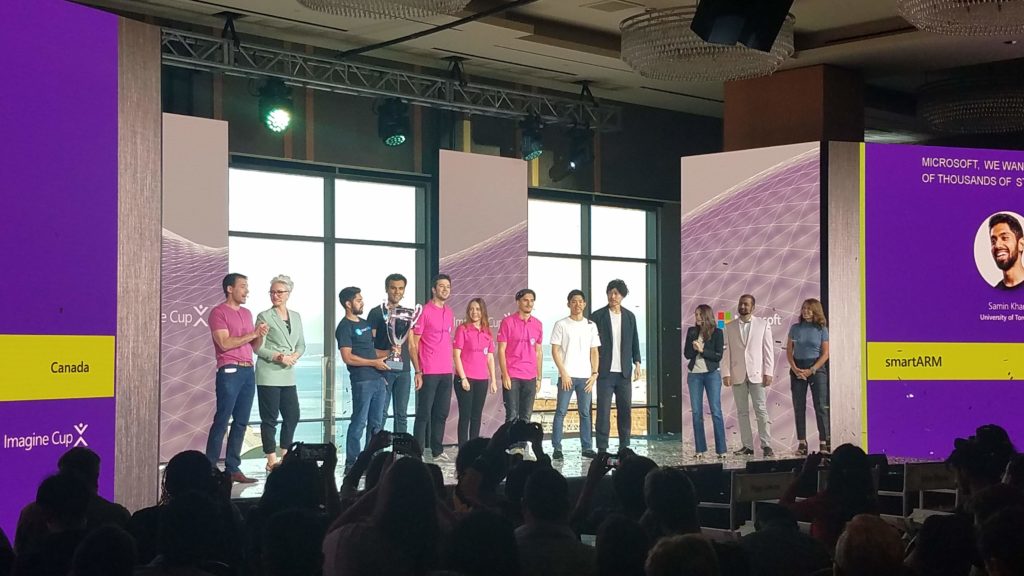 Microsoft’s Imagine Cup student competition was held this week in Seattle (read about Day 1 and Day 2). On Day 3 of the competition, the set of judges awarded the championship title to smartARM, a robotic hand prothetic that uses a camera embedded in its palm to recognize objects and calculate the most appropriate grip for an object (check out the video of their demo below). While only one team could receive the championship award, all teams are winners; I was truly impressed with their technical knowledge, passion, communication skills and maturity. They give me hope for the future.
Microsoft’s Imagine Cup student competition was held this week in Seattle (read about Day 1 and Day 2). On Day 3 of the competition, the set of judges awarded the championship title to smartARM, a robotic hand prothetic that uses a camera embedded in its palm to recognize objects and calculate the most appropriate grip for an object (check out the video of their demo below). While only one team could receive the championship award, all teams are winners; I was truly impressed with their technical knowledge, passion, communication skills and maturity. They give me hope for the future.
I was honored to attend the 16th annual Microsoft Imagine Cup this week in Seattle. The Imagine Cup is a global competition that empowers young computer science students to team up and use their creativity, passion and knowledge of technology and quantitative skills to create applications that improve the world in which we live.
This year’s event included 49 teams from around the world. Finalists vied for the chance to win up to $100K plus a mentoring session with Microsoft CEO Satya Nadella.
The Three Finalists
Starting the final day, the three finalists pitched their respective idea to the packed ballroom at the Four Seasons, including the three judges (Erica Brescia, Anil Dash and Peggy Johnson) who selected the winner.
Mediated Ear
Mediated Ear took third place. Mediated Ear is software for hearing-impaired individuals to focus on a specific speaker among a multitude of conversations. Mediated Ear relays specific sounds in audio waveforms through deep learning. With Mediated Ear, anyone with a hearing impairment can easily tune into the voice they want to hear, and filter out distracting ambient noise.
After receiving their award, I had the opportunity to interview this two-student team from Japan. When I asked them who inspires them, they said Ichiro Suzuki (from Seattle Mariners). I asked them to tell me the one word that best describes their experience at Imagine Cup. Their words were: “Diversity” (Ken) and “Matsuri” which means “Festival” (Kunihiko).
iCry2Talk
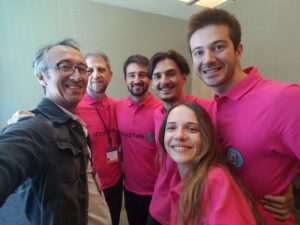
iCry2Talk – Jason Hadzikostas, Anastasia Ntracha, Andreas Loutzidis and their mentor, Leontios Hadjileontiadis
iCry2Talk took second place. iCry2Talk is a low-cost and non-invasive intelligent interface between the infant and the parent. It translates in real-time the baby’s crying and associates it with a specific physiological and psychological states, depicting the results in a text, image, and a voice message.
Working together since September 2017, Team iCry2Talk hails from Greece. First, they told me that they would like to dedicate their work to the victims of the current fires that are ravaging Greece.
While data science / machine learning solutions require three broad skills (content domain knowledge, technology/programming and math/stats), this team’s expertise lies in technology/programming and math/statistics. To gain the content domain knowledge, they extensively interviewed parents to better understand their needs and involved them in the design of their product. In addition to the help from their mentor, they said their family played a big role in their success (their family even watched the live stream of the event). Team members said their parents are very supportive, offering emotional support in tough times, the encouragement to try new things. I asked them what motivates them. I loved the response from Anastasia:
A motiving factor for me is to be able to contribute my knowledge into something that has value, that has an impact. Because, in the end, why are we learning all of this technical stuff if we cannot do something with it? ~ Anastasia Ntracha
smartARM
smartARM took first place. smartARM is a robotic hand prosthetic, created using Microsoft Azure Computer Vision, Machine Learning and Cloud Storage. The robotic hand uses a camera embedded in its palm to recognize objects and calculate the most appropriate grip for an object. Using machine learning, the more the model is used the more accurate it becomes. On the first day of the event, they showed me their demo (you can check it out below).
Final Thoughts
I had the opportunity to talk with Corey Sanders, Corporate VP of Azure Compute who cohosted the event on Day 3. As part of his job at Microsoft, Corey said that he tries to make sure the technology they are building can be easily explained and understood. I think that they are on the right track as it was clear from the presentations of the 49. Each team was able to take complex problems for which they are building solutions and were able to explain the process to the audience in such a simple, straightforward way. Corey said, “That’s the sign of a really good technology solution, not one that makes it more complex but one that makes it much more simple.”
I’d like to thank Microsoft for inviting me to this event. I enjoyed every minute of it, from meeting my media peers from around the world and seeing the impressive solutions built by students. I was truly impressed with the student’s technical knowledge, passion, communication skills and maturity. They give me hope for the future. I look forward to keeping in touch with these great human beings.

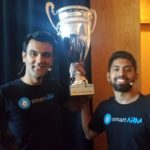

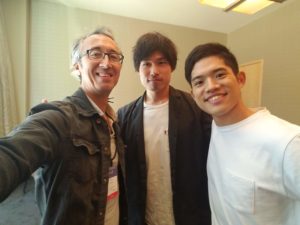
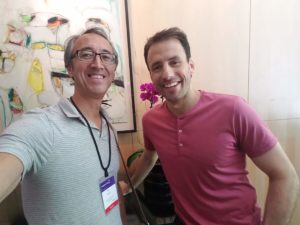

 Beyond the Ultimate Question
Beyond the Ultimate Question Measuring Customer Satisfaction and Loyalty (3rd Ed.)
Measuring Customer Satisfaction and Loyalty (3rd Ed.)
Comments are closed.